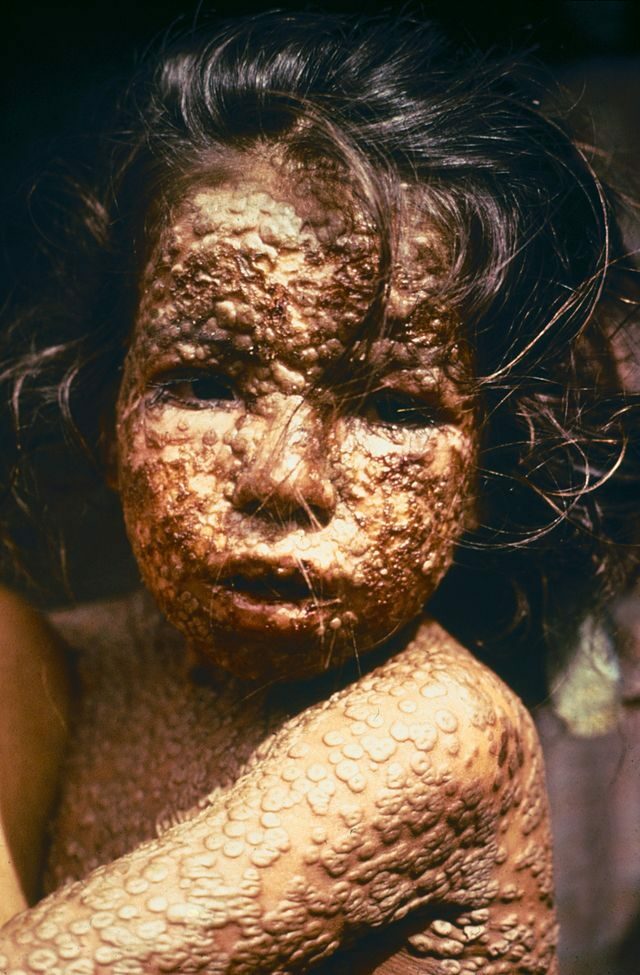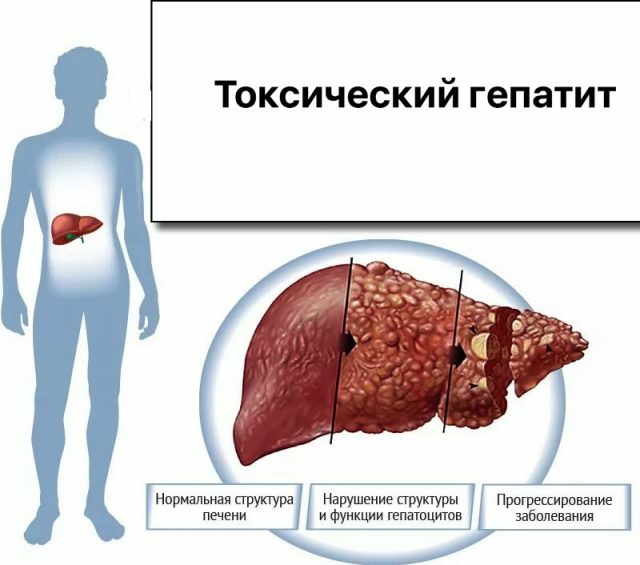Despite the fact that chickenpox, or as it is popularly called, chicken pox, has always been considered a child's ailment from time immemorial, this does not mean that an adult can not get sick of it. And if in the preschool and junior school age this infection flows easily and quickly, then adults usually get sick for a long time and hard. The older the person, the higher the danger of complications.
Contents of
- 1 What is chickenpox
- 2 What is the risk of disease in adults
- 3 Causes of chickenpox in adults
- 4 Forms, types, stages and symptoms of chickenpox
- 4.1 Typical form of
- 4.1.1 Table: Species of typical chickenpox
- 4.2 Atypical form of chickenpox
- 4.2.1 Table: Species and symptoms of atypical chickenpox
- 4.3 Disease stages
- 4.3.1 Incubation period
- 4.3.2 Prodromal stage
- 4.3.3 Rash phase
- 4.3.4 Period recovered
- 4.4 Video: temperature and rash with chickenpox in adults
- 4.1 Typical form of
- 5 Diagnosis
- 6 Treatment
- 6.1 Medicaments for adults
- 6.2 Nutrition for chickenpox
- 6.3 Folk remedies
- 6.3.1 Photo Gallery: folk remedies for ingestion
- 6.3.2 Therapeutic Bath Additives
- 6.4 Can I wash myself with chickenpox?
- 7 Chickenpox prophylaxis in adults
- 7.1 Video: Symptoms, prevention, treatment of chicken pox and shingles
What is chicken pox
Chickenpox is an infectious disease characterized by high infectiousness. The causative agent of chickenpox is a virus called Varicella zoster. It belongs to a group of microorganisms that cause herpes, spreads in an airborne way and can easily travel a few meters. Due to its microscopic size, the virus easily enters with the current of air from one room to another. It can penetrate into the apartments even through ventilation ducts.
It is for the volatility, "windiness" of the virus, the disease got its name.
The disease manifests itself in the form of specific rashes on the skin and mucous membranes. Typical general intoxication of the body. Peak activity of the virus falls on the autumn-winter season. At risk are adults who work with children: kindergarten teachers and nurses, teachers, doctors.
Chickenpox is sick once in a lifetime. Having overcome it in childhood, a person acquires a permanent immunity to this disease. However, in medical practice, there were still isolated cases of recurrent disease. Secondary chicken pox runs in a very light form, the elements of the rash are few, and they practically do not bother the patient. Therefore, after falling ill again, a person may never know that he has chickenpox. However, it poses a potential threat to others.
The Varicella zoster virus remains "dozing" in the body of the sick, and someday.under the influence of provoking factors, can become more active, causing suffering to the already adult wearer in the form of an extremely unpleasant phenomenon - shingles. The latter is characterized by unbearable burning and is not limited to one case of the disease in life, but can appear several times.

Varicella zoster virus affects only people, mostly children
Than a disease in adults is dangerous
Adult people are relatively ill. However, for this category of patients, chickenpox is dangerous for its complications associated with secondary infection:
- sepsis( blood poisoning);
- bacterial skin infection caused by staphylococci and streptococci( furuncles, carbuncles);
- pyelonephritis( kidney damage);
- chickenpox pneumonia, pneumonia, laryngitis or tracheitis, accompanied by cough and pain in the chest and throat;
- hepatitis( liver disease);
- of the nervous system;
- loss of vision( neuritis of the optic nerve when involved in the process of the ocular membranes);
- stomatitis - when affected by chickenpox of the oral cavity;
- myocarditis( inflammatory defeat of the heart muscle);
- osteomyelitis( inflammation of the bones);
- arthritis or arthrosis( joint disease);
- vulvovaginitis in women or balanoposthitis in men with the location of the rash in the intimate area;
- meningitis or encephalitis( brain disease).

A sleeping chickenpox virus can live in the human body for many years and with a decrease in immunity "wake up", causing neurological disorders.
Causes of chickenpox in adults
The chickenpox, although famous for its increased infectiousness and volatility, quickly dies outside the human body. It is impossible to catch chickenpox through household items or through third parties .The source of infection is always only a sick person.
At the same time, it is completely unessential that, when in contact with a sick person, the healthy person will certainly get infected. Everything depends on the state of immunity, which in adults is much stronger than in children. But sometimes it weakens from strong neuropsychic experiences, a recent severe illness, chronic lack of sleep or malnutrition. Contact of a healthy person with a sick shingles is another way to get chickenpox.
Very often an adult gets a varicella-zoster virus from their own children, who "brought" the disease from school or kindergarten. The likelihood that a mother who has not been sick before will become infected by caring for her "windmill" child is close to 90%.
The forms, types, stages and symptoms of chickenpox
Varicella in adults occurs in two varieties: typical and atypical.
Typical form of
Typical chickenpox, the severity of which depends on the duration and manifestations of the disease, there are three types.
Table: Species of typical chickenpox
| Kind | Temperature | Character of rash | Other symptoms | Duration |
| Light | Within 37 - 37.4 ° C | Slight amount of rash or single pimples | General condition intact | 3-4 days |
| Medium-Heavy | Up to 39.5 ° C | Dense itching rash | Symptoms of general intoxication( headache, nausea, weakness) | 5-7 days |
| Heavy | Above 39.5 ° C | Whole body completely covered with a rash, unbearable itching | Nausea,vomiting,loss of strength, painful pain in the head | 8 days and longer |
Atypical form of chickenpox
Atypical disease occurs in people with severe immunodeficiency( for example, in AIDS patients).Such patients may have deep necrosis of the skin and even internal organs. This form of chicken pox is classified into 4 varieties.
Table: Species and symptoms of atypical chickenpox
| Types | Rudimentary | Visceral | Hemorrhagic | Gangrenous |
| Symptoms |
|
|
|
|
Stages of the disease
4 stages are typical for the development of chicken pox.
The incubation( asymptomatic) period
Begins from the moment of contact with the patient and lasts from ten days to three weeks. The virus of chickenpox is introduced into the mucous membrane of the nose and throat and actively multiplies there. Man does not yet know that he is sick.
Prodromal stage
This phase begins with the release of the virus into the total blood flow. The patient loses appetite, weakens, his temperature rises sharply and his health worsens. Cervical and parotid lymph nodes increase - this feature is characteristic only of adults. During this period a person is already contagious. The prodromal stage lasts 2-3 days and ends with the appearance of the first element of the rash.
Rash phase
This is the main and most active stage of chickenpox. The localization of the virus in the epidermis is accompanied by the appearance of a profuse itchy rash. The temperature is kept at high elevations( 38 - 40 ° C).Elements of the rash immediately after appearance appear on the skin as red tubercles( papules), but after 3-4 days they turn into transparent vesicles filled with liquid( vesicles).The rash is unbearably itch, literally forcing a person to roll on the floor. Frauding, the vesicles are transformed into small ulcers. Similar rashes can appear on the mucous membranes of the genital organs, mouth and eyes. The sores that appear in these places cause severe discomfort and pain.

On the skin of a patient with chickenpox at the stage of "flowering" you can simultaneously see and tubercles, and vesicles, and sores, and crusts
Recovery period
At the last stage of the disease, the sores dry up and turn into crusts. The latter, dried up, fall away. On the site of the former chickenpox there is a scar or a dark speck. The largest of them persist for several years. On the body of the patient can exist simultaneously and red tubercles, and vesicles, and sores, and crusts. Meanwhile, the body produces antibodies to chickenpox, which neutralize the causative agent of the disease. The patient is gradually recovering. After all crusts fall off, a person ceases to be contagious to the surrounding .The total duration of varicella in adults, including all its stages, is approximately 3 weeks.
Video: temperature and rash with chickenpox in adults
Diagnosis
The diagnosis or treatment of chickenpox is handled by a therapist or infectious disease doctor. To diagnose chicken pox, a specialist, as a rule, may have an external examination of the patient. A typical itchy rash, a fever, a general malaise - all this gives reason to suspect chickenpox. And if in the recent past a person had contact with a patient - the diagnosis is beyond doubt.
At present, the threat of smallpox is almost eliminated. In doubtful cases, when differentiating it from chickenpox, the following points should be considered:
- smallpox begins with high fever and severe pain in the sacrum;
- with the appearance of the first rashes( approximately on the 5th day of the disease), the temperature drops;
- elements of the rash with smallpox have an umbilical depression in the center, do not subside when pierced;
- rash is monomorphic - all "pockmarks" are at the same stage of development;
- rashes with a smallpox are dense and located in a deep layer of skin.

Fortunately, this terrible disease called "Smallpox", which once took millions of lives, hardly ever occurs
After examining the skin and measuring the patient's body temperature, the doctor should detect possible complications if they had time to appear. For this, he listens to the heart, lungs and bronchi of the patient, examines his stomach for the increase and soreness of the liver and other internal organs. With a typical form of chicken pox in additional analyzes, as a rule, there is no need.
Atypical form of the disease requires differential diagnosis with such cutaneous pathologies:
- herpes simplex;
- streptoderma;
- allergy;
- vesicular rickettsiosis( spotted fever);
- dermatitis;
- stryful( scrofulous adults).
For the diagnosis of chickenpox, the following laboratory tests are performed:
- VIRUSOSCOPY - examination under a microscope of a colored fluid taken from vesicles.
- A serological study is the determination in the blood of a patient of antibodies formed against the virus Varicella zoster. If their number increases with time, then this indicates the presence of chickenpox.
- Blood test. Usually without deviations, or slightly increased ESR, indicating that the inflammatory process in the body.
- Urinalysis. The appearance in the latter changes, different from the norm, serves as a marker for the arising renal complications.
Treatment of
Hospitalization requires a patient with a severe or atypical form of the disease or with developing complications. Treatment of typical chicken pox in adults is done at home. The patient should be isolated from healthy people who have not been sick before. It is important to comply with all prescriptions of the doctor. In the prodromal phase, as well as in the rash at high temperature, the patient should lie in bed. It is necessary to limit any load to it. This will reduce the risk of unwanted consequences. Bed and bed linen should be changed every day.
It is necessary to drink as much liquid as possible( up to 3 liters per day, if there are no contraindications) in order to quickly expel the virus from the body. Hand washing should be done every hour in order to avoid infection in the elements of the rash during cleansing. Nails need to be shaved short. It should avoid sweating - it increases itching.
Medications for adults
Drug medications for ingestion or injection are prescribed by a doctor as needed. These can be drugs of such action:
- Antiviral - Acyclovir, Amiksin, Kagocel, Valaciclovir, Cycloferon, Valtrex, Famciclovir. They stop the formation of DNA, which is necessary for the propagation of the virus Varicella zoster.
- Antipyretic( used at temperatures above 38.5 degrees) - Aspirin, Ibuprofen and preparations based on paracetamol. Reduce temperature, have anti-inflammatory effect.
- Antihistamines - Suprastin, Tavegil, Loratadine, Diazolin. Soothe, reduce itching, block allergic reactions, have a mild hypnotic effect.
- Immunoglobulin from chicken pox virus - Zostevir. The drug is made from human blood serum, which has been treated with chickenpox. Binds the virus, facilitates the course of the disease and shortens the stage of rashes.
- Antibacterial - Cefazolin, Oxacillin. Appointed in case of accession of a purulent infection. Stop the multiplication of bacteria.
- Detoxification - Reopoliglyukin, 5% glucose solution. They accelerate the blood flow, purify the body of toxins, and take them out.
Means for external treatment of varicose veins:
- Gerpevir, Acyclovir - antiviral ointments;
- Zinc Ointment, Lotion Calamine, Chillodol Zindol, Fenistil gel relieve itching;
- diamond green, Fukortzin used for disinfection of rashes;
- Furacilin, Miramistin, manganese - for mouth rinsing and genital washing;
- Delaxin cream or powder - for drying the rash and reducing itching.

Fukortsin has been traditionally considered to be one of the most reliable disinfectants for many years.
Food for a chickenpox patient
In the diet of a patient, easily digested food should prevail. Since the disease is accompanied by high fever and general intoxication, the person's appetite decreases, but the fight against the disease requires a significant expenditure of energy. Therefore, the menu with chickenpox should ensure that sufficient amounts of nutrients, trace elements, vitamins and liquid enter the body. If the rash of the mouth and respiratory tract is affected, food should be served in a semi-liquid or wiped condition. It is necessary to limit the sweet - it can promote the reproduction of bacteria on the skin.
Recommended for acute disease:
- cereals and vegetable soups;
- not strong fish or meat broths;
- fermented milk products;
- steam meatballs and cutlets;
- puree, stewed and boiled vegetables;
- boiled fish or chicken;
- non-acidic, soft fruit and compote of them;A steam omelet or scrambled eggs.
Patients with chicken pox, especially those who take antiviral drugs, need a lot of drinking to speedily remove the virus from the body. You can drink ordinary warm water, as well as a weak tea with a viburnum or lemon, fruit and berry kissels and compotes, a broth of dogrose.
Under the ban for the patient should be:
- spicy, spicy seasonings and spices;Pickled pickles, marinades;
- onion, radish, garlic;
- is fatty and fried food;
- coffee and strong tea;
- alcoholic beverages;
- all products that caused an allergy before the illness.
When the oral mucosa clears from the rash and falls to normal temperature, the patient can return to her habitual diet.
Folk remedies
With the help of folk methods of treatment it is possible to increase the defenses of the body and help it to get rid of the windmill intoxication. Drinks from herbs are taken inside. Below are some of the chickenpox remedies:
- Vitamin drink made from celery juice and orange. From 1 root and 1 citrus fruit squeeze out the juice, mix and take before eating it all at a time.
- A glass of blueberries, eaten during the day, will support the immunity of the patient.
- When rashes on mucous membranes, rinse your mouth with sage or soda water( 1 tsp baking soda for a glass of boiled water).This means can be washed off the genitals.
- Collection of herbs №1.Equal amounts of chamomile flowers, marigold, marigold and grass blend. Pour 5 tablespoons of a mixture of 1 liter of water, bring to a boil, remove from heat and allow to stand for 1 hour. Take half the glass 4 times a day for half an hour before eating.
- Collection of medicinal plants №2.Dry raspberry leaves, linden flowers, willow bark shall be finely chopped and mixed in equal proportions. Pour 4 tablespoons of 1 liter of boiling water and let stand for 40 minutes. Take half a cup 3-4 times a day before meals.
- Drink with mummies.1 teaspoon of this medicinal raw material is bred in half a glass of slightly warm water and drink the remedy in the morning before breakfast. This drink perfectly strengthens the immune system and speeds up the healing of wounds.
- Honey drink with lemon. Juice from 1 fruit and a teaspoon of honey diluted in 1 liter of water. Drink several times a day.
The same drink can be prepared in milk and without lemon juice.
Gallery: folk remedies for ingestion
 Substances in blueberries weaken the virus - causative agent of chickenpox
Substances in blueberries weaken the virus - causative agent of chickenpox  Infusion from herbs calms, removes inflammation, having a beneficial effect on the skin
Infusion from herbs calms, removes inflammation, having a beneficial effect on the skin  Miracle balm created by nature itself, very well strengthens the immune system and accelerates skin regeneration with chickenpox
Miracle balm created by nature itself, very well strengthens the immune system and accelerates skin regeneration with chickenpox  Lemon in combination with honeyenriches the body with vitamins, increases the immunity of
Lemon in combination with honeyenriches the body with vitamins, increases the immunity of  Lime flowers are an excellent natural antiseptic in many diseases
Lime flowers are an excellent natural antiseptic in many diseases Therapeutic bath additives
And also you can addlyat decoctions and infusions of medicinal plants in the water for baths - they reduce the itching and inflammation of the elements of an eruption. Baths should not be taken at high temperatures!
Preparation of bath products:
- A bath with oats decoction taken at night will reduce the itching of the skin. To prepare the preparation, boil half an hour 500 grams of raw oats in 3 liters of water. Cooled and strained broth is added to the bath water. The product quickly loses its healing properties, so each time you need to prepare fresh.
- Bath with chamomile, calendula, oak bark or celandine will relieve itching, reduce the risk of ulcers, soothe the skin and nervous system.4 tablespoons of raw material pour 2 liters of water, bring to a boil, turn off the fire and let stand for half an hour. Ready to infuse and pour into a bath. You can add there a few drops of bergamot essential oil or tea tree.
You can use both a mixture of these plants, and each of them separately.
The itching will also reduce the addition of baking soda, several crystals of potassium permanganate or 2-3 tablespoons of vinegar to the bath water. The tar soap has proved to be very successful in people - careful sapping of inflamed skin dries and heals the elements of the rash.

Lathering with tar soap of inflamed skin with chickenpox accelerates the healing of rashes
Can I wash myself with chickenpox?
The question of whether it is possible to wash the head and body in the presence of chickenpox rashes is a subject of heated debate. Naturally, any person feels better when he is clean, and not bathe for 2-3 weeks( as long as the illness lasts on average) - is very problematic.
To date, most doctors have come to the conclusion that it is not only possible to bathe during chickenpox, but it is also necessary, under one condition: the acute stage of the disease, characterized by high fever, chills and symptoms of general intoxication, should be left behind.
Water treatments have a positive effect on the skin, cleanse and soothe it. You can take a shower or a bath. However, there are a number of rules for bathing during chicken pox which must be strictly observed:
- Do not wash with hot water. The water temperature should be comfortable( 35-40 degrees).
- It is not recommended to use normal soap - both solid and liquid. It is better to soap the body with a neutral shower gel. Most suitable for chickenpox is a gentle gel cream for bathing infants.
- You can not use a loofah or scrubs to prevent the integrity of the vesicles. It is possible to soak the inflamed skin only with the palm of your hand.
- The head can be washed with a soft baby shampoo, gently massaging its hairy part with your fingers without using nails.
- After bathing, do not rub the body with a towel, especially hard. Rip off the bubbles and crusts can lead to infection of the wound and the development of purulent complications. The skin needs only to get wet with a soft flannel diaper. Long hair should be wrung out and let them dry themselves. Do not use a hot hair dryer!
Chronic varicella prophylaxis in adults
For the prevention of chickenpox, you must protect yourself from contact with a sick person. If a family member becomes ill, he should allocate a separate room, dishes and hygiene items. In the apartment where the patient lives, daily it is necessary to do a wet cleaning. To healthy household members who have not been sick before, it is recommended to wear a gauze mask at home, which must be changed every day, washed and ironed with a hot iron.
If contact with the chickenpox still failed, then you can take emergency preventive measures - contact the medical institution for the introduction of immunoglobulin against chicken pox. Such an action makes sense only in the case when no more than three days have passed since the moment of contact.
At will, adults can be vaccinated against chickenpox. It is performed by two injections with a break between them of 1.5 to 2 months. The vaccine from chickenpox contains a weak live virus Varicella zoster. Vaccination can be applied both planned and urgent.
As a side effect after vaccination, slight signs of chickenpox and a slight increase in temperature may appear. However, vaccination against chickenpox in the vast majority of cases is easily and painlessly tolerated by adults. It is worth thinking about the advisability of vaccination only to those people who are allergic to any components of this vaccine. And still it is necessary to remember about its rather high cost.
Video: Symptoms, Prevention, Treatment of Chickenpox and Shingles
Chickenpox in adults is quite a serious and painful ailment. But in the arsenal of modern medicine there is a wide choice of medicines and folk remedies that can alleviate the condition of the patient. And if a person has become infected, he should protect himself as much as possible from the infection of others. It is necessary to take a sick leave sheet and stay at home until the last crust disappears, and make every effort for a speedy and full recovery.



